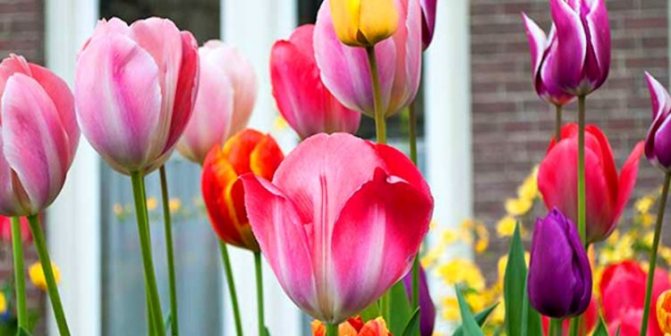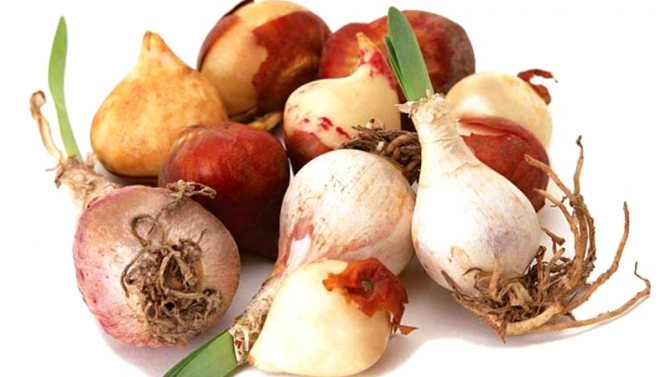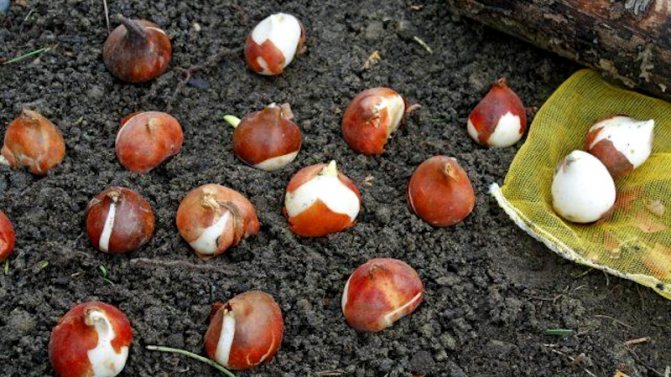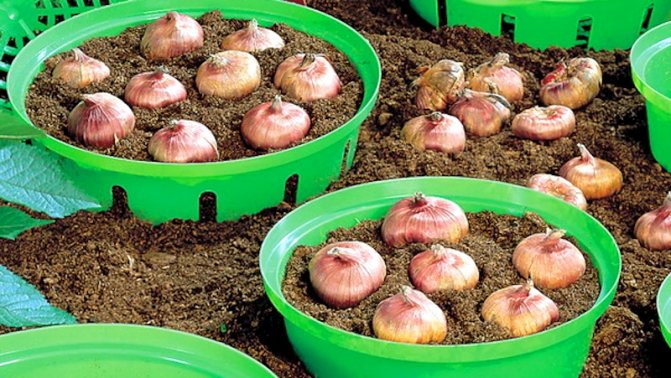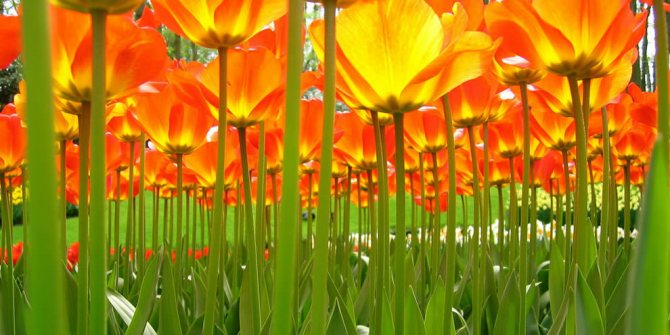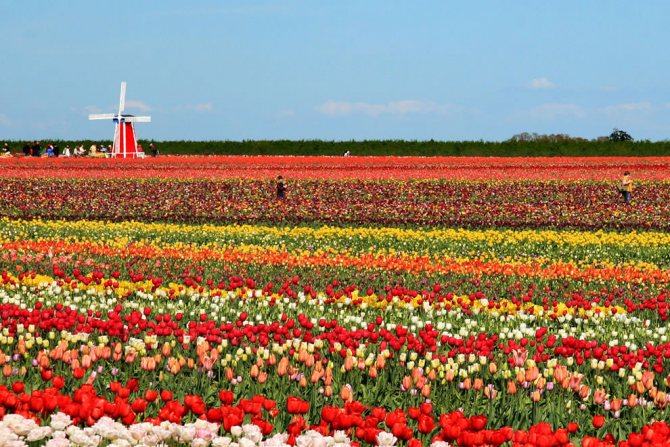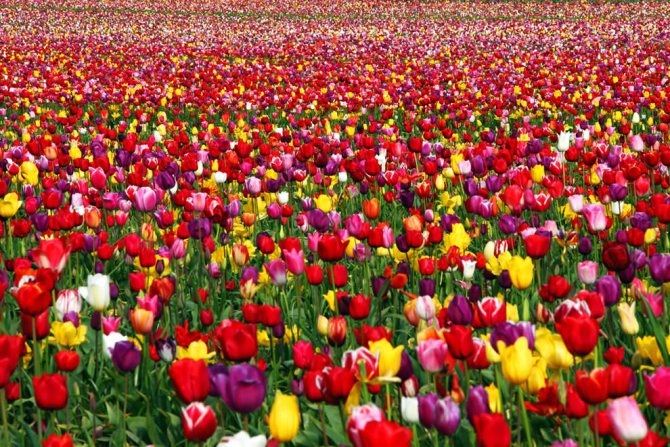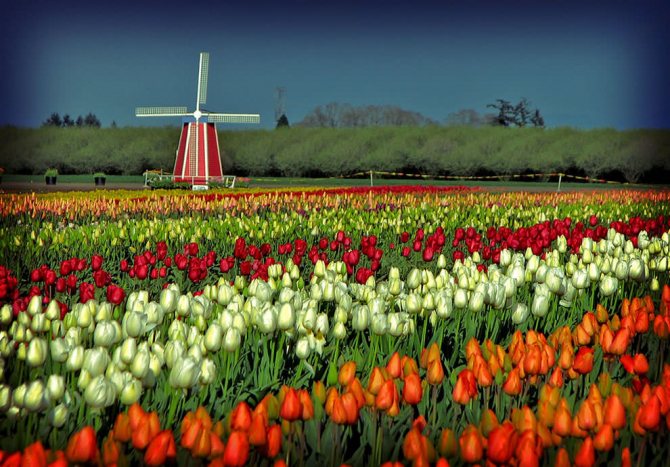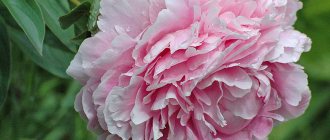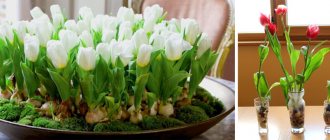Tulips bloom in early spring. At the same time, they are planted mainly in the fall. This is done so that the bulbs of the plant can survive the cold period and only then form the stem and buds. In winter, despite the frosty weather, tulips are not just underground. The future plant is laid in the bulbs. If this period is simply excluded and the flowers are kept warm throughout the winter, then in the spring tulips grown from such bulbs will be very weak. Most likely, they will not even bloom. If the buds appear, they will be very small and rare. That is why experienced flower growers are advised to plant tulips in the fall. But everything does not always work out according to the rules. There are circumstances in which you can stay in deep winter with tulip bulbs in your hands. In this case, you will no longer be able to land them on the street in the frozen ground. So can tulips be planted in spring? Can. But this should not be done thoughtlessly, but in accordance with some rules. Planting tulips correctly in spring will have a good effect on the health of the plants, and can even stimulate them to bloom.
How to prepare bulbs for planting
The first step is to adapt the bulbs to a cooler environment. Place them in a refrigerator at + 4 ° C. Then treat the tulip bulbs with a mixture of potassium permanganate to protect them from various parasites and diseases. To do this, dilute the pinkish mixture and place the bulbs there for half an hour. There is a second way to process bulbs. To do this, you will need to buy celandine at the pharmacy and soak the bulbs in it for thirty minutes. Remember to choose only the strongest and best bulbs for planting, so there will be more chances that they will take root.
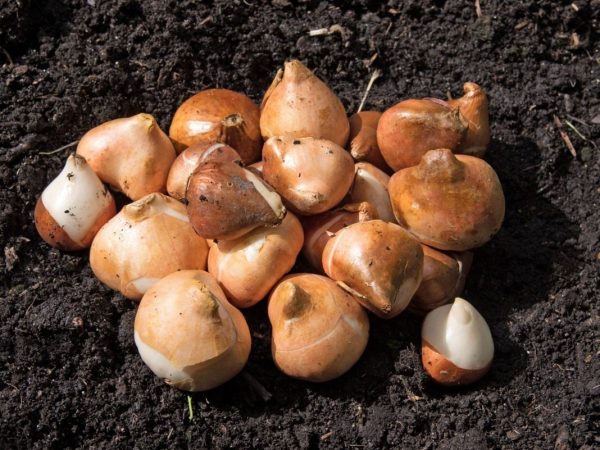
Before planting tulips outdoors, inspect it carefully. Make sure the top covers are intact and there are no parasites or fungal diseases in the soil itself. If you plant tulip bulbs in poor soil, there is a high chance that the bulbs will die or you will get poor flowering flowers.
Nature will give the right answer
To correctly answer this question, it is worth observing how tulips grow in nature. Once you understand the natural rhythm of wild flowers, you can easily determine the ideal time to plant your bulbs.
Most varieties of tulips are native to Central Asia. As a rule, these plants are found here in sandy and stony deserts, in steppes, crevices of rocks, on scree, in arid mountain areas and foothills. It is worth noting that in early spring these areas simply amaze with their unique beauty. After all, it is at this time that tulips bloom. Photo confirmation of this. Flowers cover the deserts and slopes of the mountains of Central Asia with a variegated living carpet.
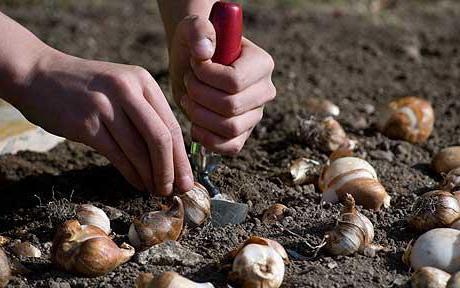

When the chill of spring turns into summer heat, tulips wither and dry up. All the life of these plants is concentrated in the bulb. Tulips go deep into the ground. When autumn comes with its coolness, the plant forms new roots. This will allow it to bloom in the spring immediately upon awakening. As you can see, tulips bloom in their natural environment only after winter.Colds are necessary for the plant to collect useful components in the bulb, which have a great influence on processes such as germination and flowering. Do you think tulips can be planted in spring? Or should we wait until autumn?
How and when to plant tulips in spring
Most tulips love humus-rich soil. If your soil is clayey, then it needs to be changed urgently. The situation can be corrected by adding river sand, manure and peat. Also, before adding, peat should be treated with lime.


With the arrival of spring, treat the soil for planting tulips. Dig up the ground and then add fresh manure and any organic groundbait. If at the very beginning you doubt that your soil for planting tulips is not fertile, then you should get mineral dressings. Those that have potassium sulfate in their composition are well suited.
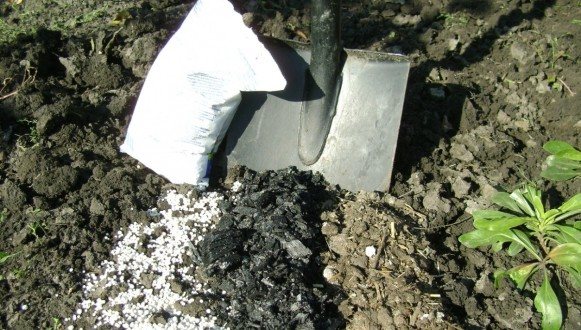

The most acceptable temperature for landing is from + 6 ° С to + 11 ° С. High and low temperatures contribute to the malformation of the root system.
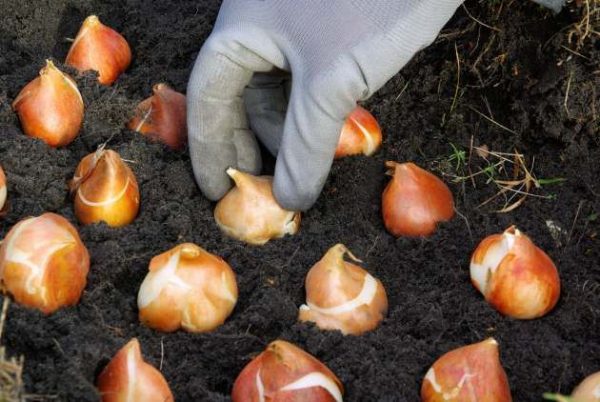

If you have purchased an early-flowering tulip, plant it a few weeks later than a late-flowering variety. You need to plant it to a depth of three bulb sizes.
Spring flowers tulips
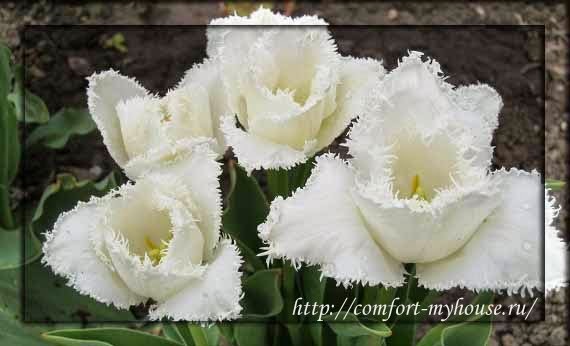

Good day!
Spring is in full swing, everything is blooming: the cherry is so elegant and of course, my favorite flowers are spring flowers tulips. Although these are not the first spring flowers, crocuses and daffodils have already faded, and after the tulips, irises are already blooming.
I love to photograph all this beauty. So I decided to share with you.
Spring flowers tulips
The tulip is a symbol of spring, a very beautiful flower. It is a perennial bulbous plant.
It starts growing very early, but easily tolerates frost. This year, back in March, tulips hatched on warm days, and then suddenly winter returned with snow and frost, but the tulips withstood this onslaught and bloomed by mid-April.
Tulip flowers are classified into simple and double, elegant lily-colored with pointed long petals, fringed, parrot flowers with wavy and disheveled petals, Darwin's hybrids, triumph tulips, now fashionable green-flowered (with a green petal back) and others. True, I have never met the last green-flowered ones.
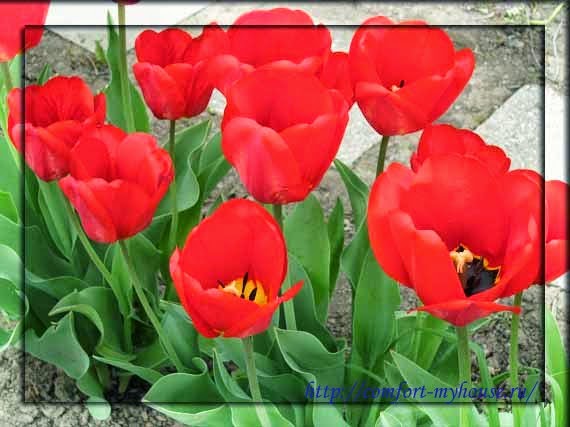

And the fringed ones are my favorites, they have such a beautiful needle-like fringe along the edge of the petals, now I spread them. But I also like the simple red spring flowers tulips. Especially when they grow in large arrays, and other flowers cannot leave indifferent, they always delight us with their flowering.
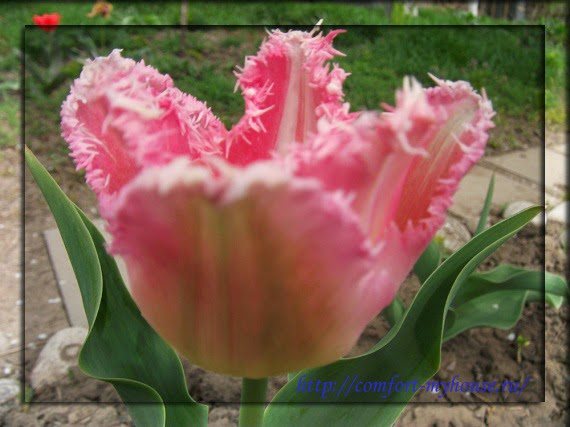

Different varieties of tulips bloom at different times, some as soon as the snow melts along with the crocuses, others in early April, and there are also tulips that bloom in May-June.
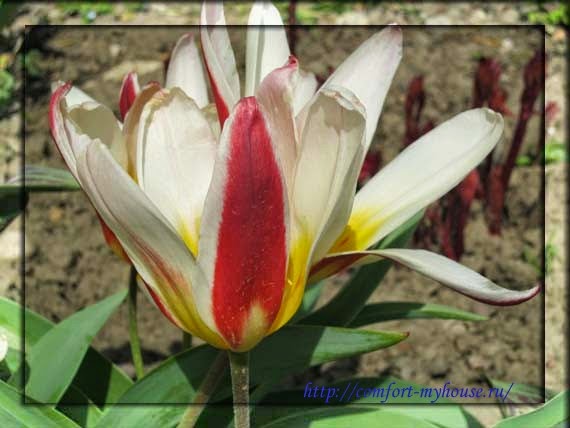

Planting tulips
For tulip flowers, loose, sandy soils are better.
Correct planting of tulips is very important for their normal flowering.
When to plant tulips?
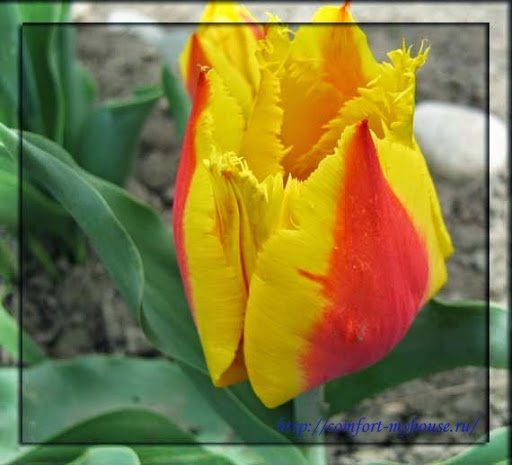

Tulips are planted when the soil temperature reaches 9-10 degrees, usually in late September - early October. It does not make sense to plant tulips at an earlier or later date, since the bulbs do not take root in either very warm or very cold soil.
The planting depth should be 3 times the height of the tulip bulb.
After planting, if the soil is dry, water it.
Tulip care
In early spring, at the first shoots, tulips are fed with ammonium nitrate, and after the buds appear, they are fed with potassium nitrate.
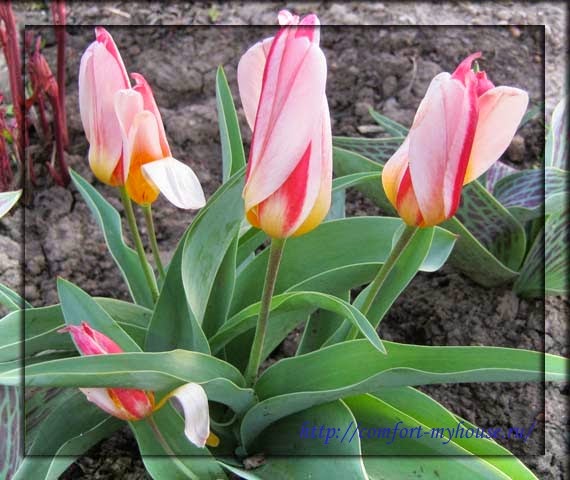

Caring for tulips is weeding and loosening, watering in dry weather for more than 10-14 days. But I have never watered tulips yet, as it usually rains enough at this time.
Faded tulip flowers need to be broken off.
Propagation of tulips
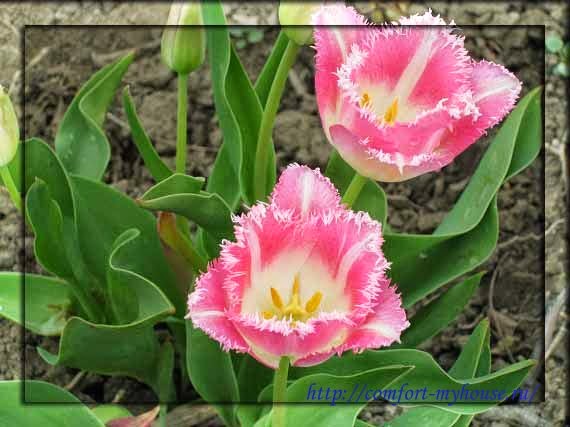

After one to three years, tulips need to be planted, otherwise the flowers will be small. After the ground part dies off in June, the bulbs are dug up, scattered in a thin layer into boxes for ventilation. Then they are cleared of earth, old scales and stored for the first month at a temperature of 23-25 degrees. At a lower temperature, no flower buds will form in the bulb. For further storage, the temperature is reduced to 20 degrees in August and to 15 in September.
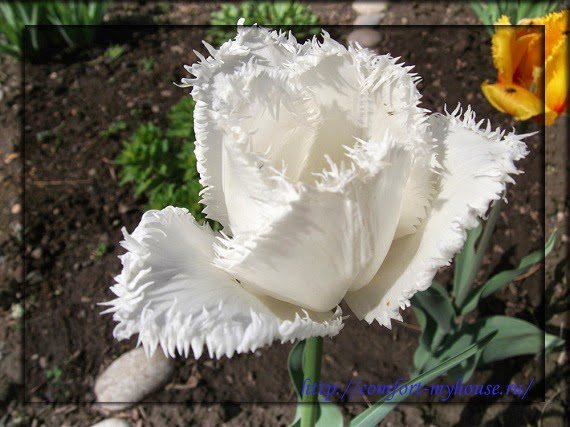

Garden design
Flowers tulips are planted in flower beds, lawns, under trees. It is convenient to plant tulips next to hosts, astilbe, phlox. When the tulips bloom, the leaves and stems of these plants will grow back.
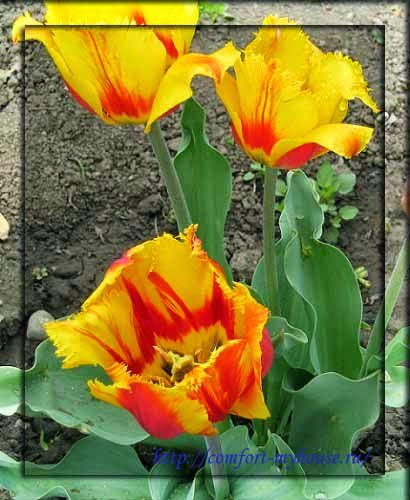

Terry and non-double tulips planted next to it look very beautiful.
Landscape designers advise planting spring tulip flowers in groups with irregular edges, avoiding straight lines and strict geometric shapes.
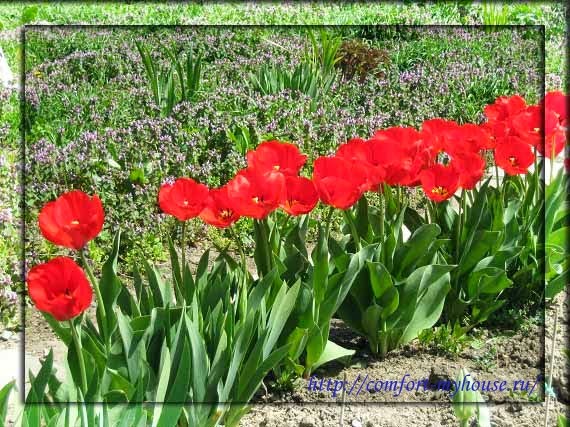

A huge carpet of one-color tulips over large areas makes a strong impression.
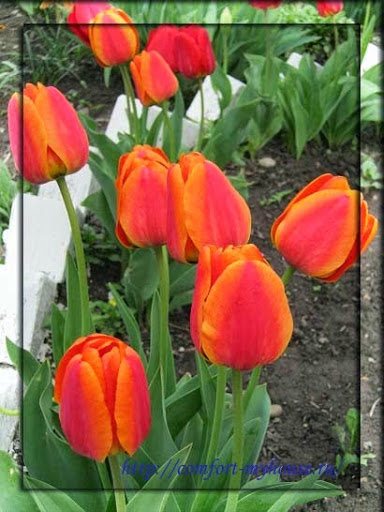

The material was prepared using A. Tumanov's book "The Encyclopedia of the Summer Resident".
Spring and sunny mood for you!
Don't miss new publications!
- Miniature Perennial Pansies
- My favorite peonies. Growing
- Such a different graceful zinnia
- Purslane flowers. Bright and cheerful
Initial tulip care
- If you notice a bad bulb, get rid of it immediately, because it can be contagious and spread the infection to other plants.
- Examine your tulip bulbs regularly to find any that have not sprouted or have become infected.
- Do not let the soil dry out!
- Carefully loosen the soil around the sprouts. This will help the roots get enough air.
- Carry out the first dressing of tulips:
Important! Nitrogen-containing fertilizers should be used. They promote leaflet formation and growth.
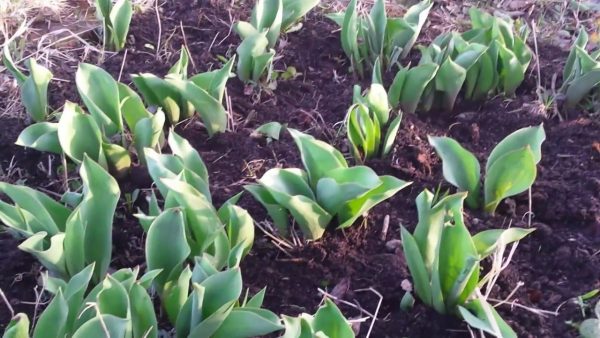

Now all that remains is to wait for these wonderful flowers to bloom.
Tulip flower - description
Tulips are herbaceous plants that have a short growing season. In the morphological structure of a flower, there are: root, bulb, leaves, trunk, fruit. There are 113 varieties, countless hybrids.
The most famous varieties include:
- Ronaldo;
- Dutch;
- Variegated;
- Triumph.
Due to the constantly growing number of varieties, there is no permanent accurate classification. It is customary to use the horticultural classification. Experts divide the flower into 4 groups, depending on the flowering period. They, in turn, are divided into 15 classes by type.
Caring for tulips after flowering
- Petals that have fallen off must be removed regularly so that there is no soil contamination due to humus.
- If you want to propagate tulips, prune their heads after a week of flowering.
- In no case, do not cut the stems of plants until they are completely yellow.
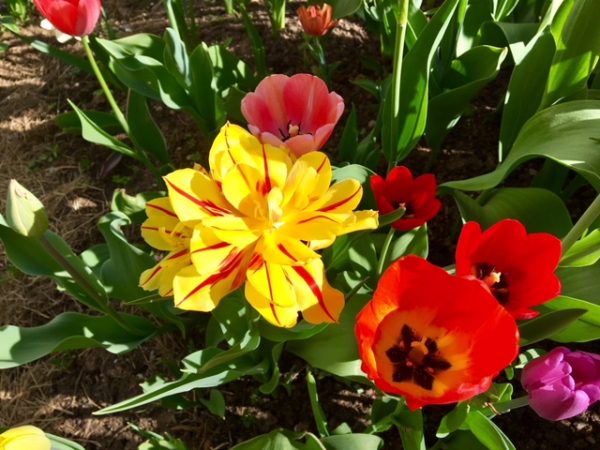

Preventive measures:
- Carefully study the variety of tulips that you are going to plant, because each of them has its own specifics of care.
- Treat the soil before planting.
- During the growth of tulips, do not forget about feeding.
- Remember that tulips need to be experienced from one place to another every 5 years.
- Observe the bulbs regularly, look for plants with an infection.
- Follow the rules for planting the bulb.
- Don't forget to care for your tulips.
- Remove diseased flowers by the roots.
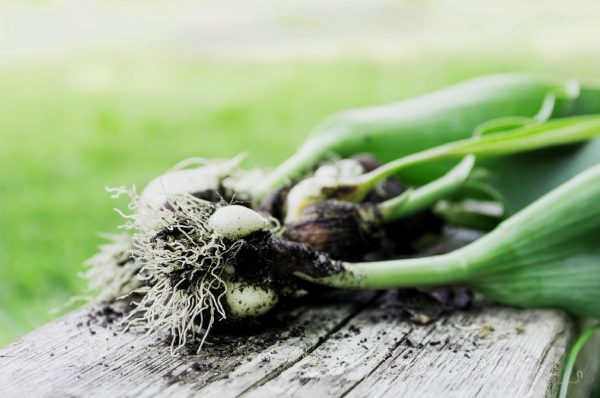

With good care and compliance with all of the above rules, you will be able to observe the flowering of your tulips in the year they are planted. Believe in yourself and your strength, and then you will succeed!
Planting in spring: features
So, can tulips be planted in spring? Many argue that you can, but you shouldn't. What if all the autumn planting dates have passed, and you need to plant the bulbs? Of course, the plants planted in spring will also sprout and bloom.They bloom, however, a little later. You can speed up the growth and blooming of buds by resorting to simple techniques. Of course, proper grooming also matters.
Before planting tulips that have lasted all winter or were recently purchased, place the tubers in the refrigerator overnight, but not in the freezer.
The next day, dilute the pink potassium permanganate solution and gently rinse the bulbs. Only then can you plant tulips.
Tulip planting technology
After preparing the soil, proceed directly to planting. To do this, planting material is evenly distributed over the site, leaving a distance of 8-10 cm between each copy.
Note: Planting depth depends on the size of the bulbs. Large ones are buried in the ground to a depth of 10-15 cm, and small ones - only 5-7 (Figure 5). This condition must be observed, since planting small bulbs too deep will slow down their germination, and large ones may appear on the surface when placed in too small holes.
Grooves or holes are made in the flower bed, watered, prepared bulbs are carefully placed in them and sprinkled on top with a layer of nutrient soil. The upper surface of the earth is leveled with a rake. After that, the garden is watered. Double irrigation provides closer contact of the planting material with the soil and accelerates its germination.
From the video you will learn how to properly carry out a spring planting.
What bulbs can you plant?
Naturally, for planting it is necessary to use, choose the healthiest bulbs.
When buying tulip bulbs, you should pay attention to factors:
- When buying, choose large bulbs. The likelihood that small bulbs will sprout is small. Such flowers can be frail, not producing beautiful flowers.
- Bulbs shouldn't have a lot of husk, before planting, the excess husk is removed. She must be present. Although flowers germinate without scales.
- Throw out damaged, chopped onions., do not use when landing. They will most likely fail to take root. If the cut is very deep, the chance of germination is very small.
- It is better to buy planting material immediately after digging - end of July beginning of August. Thus, you can independently monitor the storage. As a rule, in stores, in warehouses, they do not monitor the microclimate, which provokes drying, rotting of the bulb.
- The planting material must have a uniform color, not have any damage, stains. It should be dense, well dried.
Some gardeners order bulbs from China. Such plants are likely to be unsuitable for planting. Bulbs can deteriorate over a long period of transportation.
Choosing a place for planting (soil preparation, top dressing)
When arranging a flower bed or choosing places for flower beds of various configurations, it is necessary to take into account the fact that decorative types of tulips love the sun, but do not like the wind. In shaded areas, the bulbs become smaller, bloom poorly.


Flower beds can be placed around the trunks of still unblown trees, creating color spots, stripes, zig-zags. All this is possible because tulips have no special requirements for the composition of the soil.
The soil can be sandy loam, light loamy. Sand can be added to heavy soil by adding it directly to the planting hole. The main requirement that applies to the planting of all bulbous plants is that the land must be loose and fertile.
If in the fall it was not possible to prepare and dig up a site for tulips, this will have to be done in the spring 5-7 days before planting. The digging depth should be up to 20 cm. In a week, the soil will be slightly compacted and normal conditions will be created for the growth of the roots of the bulbs.
The tulip develops its aerial part due to the forces accumulated by the bulb last year. Therefore, if the soil is not fertile enough, then flowering can still take place, and the plant has practically no strength left for the rest of the life cycles.
It is better not to apply fertilizers to the newly thawed soil, but to carry out top dressing later. If it is possible to apply fertilizer, then for infertile soils, up to 1.5 kg of rotted manure, 50 g of superphosphate, 30 g of potassium sulfate are used for 1 sq. M.
Major mistakes at all stages
Masters note a number of oversights that absolutely all gardeners make:
- Transplant during the flowering period. This will reduce the survival rate of the flower in a new place. Flowers may not bud for next year.
- Transplant during the growing season. In any case, it is necessary to wait until the end of growth and maturity, otherwise the plants will not survive the transfer.
- If a blooming tulip is taken out along with the bulb, it should be placed in a vase of water and wait for the natural completion of flowering.
- Incorrect storage regime for tubers. It should not be allowed to warm up above +30 C. Such tubers may subsequently not give flowers at all.
Terms: general, according to the lunar calendar and in different regions
Planting bulbs in spring is carried out as early as the climate permits. The best option would be to plant the onions in special containers and pots for distillation even on frosty days, and when the outside temperature stabilizes, move them to a permanent place of residence.
So that the first sprouts do not die, the soil temperature at a depth of 10 cm should be at least 9 degrees. It is worth considering the selected variety - there are early and late options.
The climate in different areas also affects the planting time:
- In the southern regions, in the Kuban, with good weather and "February windows", tulips can be planted in February-March.
- In the middle lane, in the suburbs, the optimal time for planting is April.
- In regions with harsh climates, the schedule will move one month ahead.
The main condition is to complete the planting of tulips before the beginning of July, it cannot be carried out in summer.
Favorable dates for planting tulips in 2018 according to the lunar calendar:
- February 23, 24;
- March 21, 22, 23, 25, 26;
- April 17, 18, 19, 22, 23, 24;
- May 19, 20, 21.
Tulips in the landscape design of the site
We will talk about how such a procedure as growing tulips in the Urals is performed a little later. First, let's figure out what role these wonderful flowers can play in the landscape design of a suburban area. Most often tulips are grown in a separate flower bed. In some cases, only a certain variety is planted in one place. Sometimes more varied lawns of several varieties are also satisfied. Tulips feel good in tubs. If desired, they, for example, can decorate a terrace, veranda or gazebo. Sometimes unpretentious varieties, along with other liliaceae, are planted on alpine hills. Tulips look very beautiful in prefabricated flower beds in combination with other garden flowers.
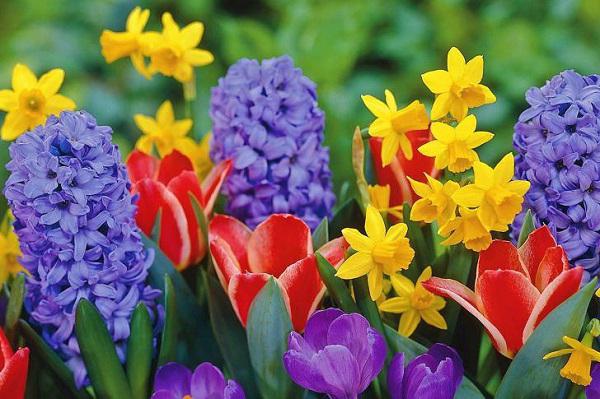

Creating a beautiful flower bed
The next planting method allows you to get a very beautiful flower bed. For this, the soil from the planting site is completely removed to a depth of two diameters of the bulb. The bottom of the resulting pit is carefully leveled. Further, according to the selected pattern, bulbs of different varieties are laid out on it. At the end of this work, the resulting flower bed is covered with earth. Growing tulips in the Urals in this way is also quite acceptable. The most important thing is to choose the right varieties. We'll talk about which ones a little later. Now we will continue to deal with the landing methods.
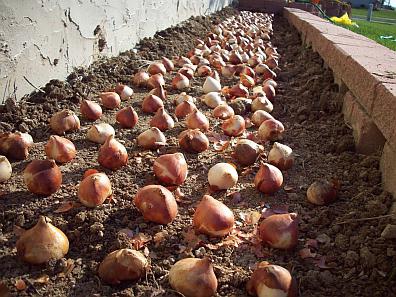

Watering and loosening
When to plant tulips in the Urals, you now know. Now let's figure out how to properly water these flowers and when to loosen the soil under them. Since the climate in this region is rather dry, it is worth moistening the soil under the tulips at least once a week after hot weather. But that's only if it doesn't rain. It is imperative to water the flowers during the budding period, as well as two weeks after flowering.
Of course, the beds should be weeded regularly. A weedy flower bed will look untidy and ugly.In addition, weeds take away nutrients from tulips, as a result of which they bloom worse. Simultaneously with weeding, it is worth loosening the soil.
Thus, we figured it out when tulips are planted in the Urals. Take care of these flowers correctly - and you will get just a gorgeous decoration for your yard or garden.
Choosing a site for a flower garden
In conclusion, it is worth talking a little about where exactly tulips should be planted. These flowers have certain preferences for growing conditions, so providing them with such conditions, you can achieve truly amazing results. In particular, when choosing a landing site, keep in mind that:
- Tulips love light and don't like shade. Make sure there is no shade on the flower bed during the day, neither from trees, nor from buildings or other structures.
- Blooming tulips are afraid of strong winds. To prevent the buds from crumbling ahead of time, protect the flower garden with a barrier of some shrubs or create a low fence from the most windy directions.
- In excessively moist soil, the bulbs rot. If the soil on your site is oversaturated with moisture, raise the flower bed 25-30 cm above the general ground level and create drainage in it by pouring a layer of rubble, broken brick or at least coarse sand under it.
Tips & Tricks
Bulbous plants planted in spring are not too different in terms of carrying out measures for the care of tulip autumn planting. After the buds are formed and go into the opening stage, special care is required. When irrigating, you should consume at least 10 liters of water for every 1 m² of a flower garden or flower bed.
Irrigation water should not be too cold. If watering is carried out on sunny days, then water droplets should be avoided on leaves and flowers. This will insure the plants against burns. At the stage of abundant flowering, tulips need feeding. Phosphorus-potassium fertilizers should be applied, in which the proportion of nitrogen is minimal or such a component is completely absent.
Spring or autumn planting?
Most cultivated plants are planted either in spring or fall. In this case, perennials are usually planted in the fall. And although for the sake of maintaining a high grade, tulips are recommended to be dug up annually and then planted again, formally they still belong to perennial flowers, and therefore they take root better during autumn planting.
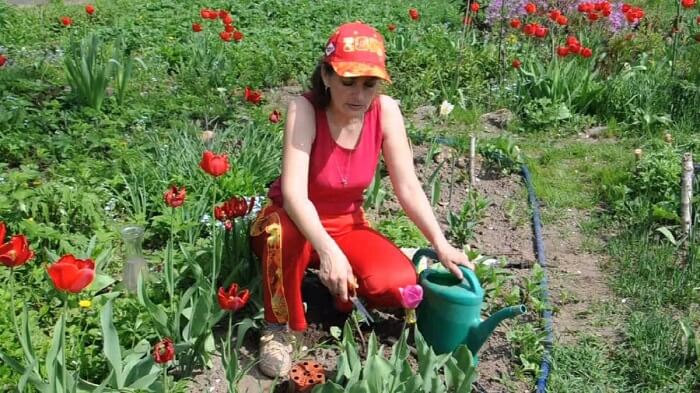

The fact is that wintering at subzero temperatures is an important stage in the development of bulbs. Under the influence of cold weather, certain chemical and physiological processes occur in them, which contribute to the appearance of healthier stems and more lush buds.
However, this does not mean at all that tulips cannot be planted in spring. This is not only possible, but for many growers it is a preferable option, which is associated with a whole range of reasons:
- Planting material is often purchased in February-March, so there is no choice but to plant the bulbs in the spring.
- Planting in spring ensures that tulips will not die in winter if very severe frosts hit.
- Flowers planted in spring bloom later, therefore, when tulips of all neighbors have already faded, they are only blooming with you.
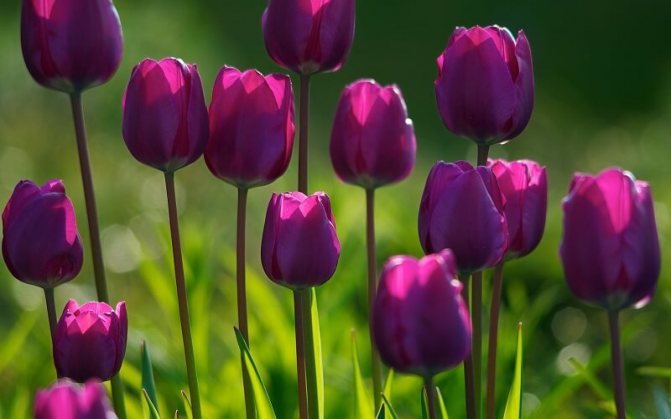

So if you are in doubt whether it is possible to plant tulips in spring, take a closer look at the experience of other gardeners who have successfully practiced this method.


